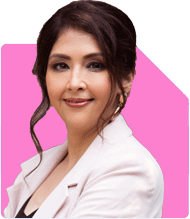Ramalingam Kalirajan |10881 Answers |Ask -Follow
Mutual Funds, Financial Planning Expert - Answered on May 15, 2024
He has an MBA in finance from the University of Madras and is a certified financial planner.
He is the director and chief financial planner at Holistic Investment, a Chennai-based firm that offers financial planning and wealth management advice.... more

At the age of 63 how can I invest my 25 lac PPF fund for steady income for my retired life.
Investing your PPF fund of 25 lakhs for steady income during retirement requires careful consideration. Let's explore some strategies to ensure financial stability in your retired life.
Assessment of Current Financial Situation
Before making any investment decisions, it's crucial to assess your current financial situation. Consider factors like your monthly expenses, existing sources of income, and any outstanding debts. This analysis will provide a clear understanding of your financial needs during retirement.
Evaluate Risk Tolerance and Time Horizon
As a retiree, preserving capital and generating steady income becomes paramount. Assess your risk tolerance to determine the appropriate investment strategy. Since you're 63, you may have a shorter time horizon, necessitating a conservative approach with less exposure to market volatility.
Diversify Investment Portfolio
Diversification is key to managing risk and achieving consistent returns. Allocate your PPF fund across different asset classes such as fixed income securities, dividend-paying stocks, and balanced mutual funds. This ensures a mix of stability and growth potential in your investment portfolio.
Consider Fixed Income Options
Fixed income instruments like Senior Citizen Savings Scheme (SCSS), Post Office Monthly Income Scheme (POMIS), and government bonds provide steady income streams with relatively lower risk. These options offer regular interest payments, ensuring a consistent cash flow for your retirement expenses.
Optimize Tax-Efficient Investments
As a retiree, minimizing tax liabilities is essential to maximize your retirement income. Explore tax-efficient investment avenues such as Tax-Free Bonds, which offer tax-free interest income, and dividend-paying stocks eligible for the dividend distribution tax (DDT) exemption.
Review and Adjust Investment Strategy
Regularly review your investment portfolio to ensure it aligns with your financial goals and risk tolerance. As you progress through retirement, adjust your investment strategy accordingly to adapt to changing market conditions and personal circumstances.
Investing your PPF fund for steady income during retirement requires a balanced approach that prioritizes capital preservation and consistent returns. By diversifying your portfolio, considering fixed income options, and optimizing tax efficiency, you can build a sustainable income stream to support your retired life.
Best Regards,
K. Ramalingam, MBA, CFP,
Chief Financial Planner,
www.holisticinvestment.in
You may like to see similar questions and answers below
Ramalingam Kalirajan |10881 Answers |Ask -Follow
Mutual Funds, Financial Planning Expert - Answered on May 17, 2024
Ramalingam Kalirajan |10881 Answers |Ask -Follow
Mutual Funds, Financial Planning Expert - Answered on May 07, 2024
Ramalingam Kalirajan |10881 Answers |Ask -Follow
Mutual Funds, Financial Planning Expert - Answered on Aug 01, 2025
Ramalingam Kalirajan |10881 Answers |Ask -Follow
Mutual Funds, Financial Planning Expert - Answered on Oct 30, 2025
Ramalingam Kalirajan |10881 Answers |Ask -Follow
Mutual Funds, Financial Planning Expert - Answered on Aug 25, 2025
Mayank Chandel |2575 Answers |Ask -Follow
IIT-JEE, NEET-UG, SAT, CLAT, CA, CS Exam Expert - Answered on Dec 13, 2025
Radheshyam Zanwar |6742 Answers |Ask -Follow
MHT-CET, IIT-JEE, NEET-UG Expert - Answered on Dec 13, 2025
Mayank Chandel |2575 Answers |Ask -Follow
IIT-JEE, NEET-UG, SAT, CLAT, CA, CS Exam Expert - Answered on Dec 13, 2025
Mayank Chandel |2575 Answers |Ask -Follow
IIT-JEE, NEET-UG, SAT, CLAT, CA, CS Exam Expert - Answered on Dec 13, 2025
Kanchan Rai |646 Answers |Ask -Follow
Relationships Expert, Mind Coach - Answered on Dec 12, 2025
Ravi Mittal |677 Answers |Ask -Follow
Dating, Relationships Expert - Answered on Dec 12, 2025
Ramalingam Kalirajan |10881 Answers |Ask -Follow
Mutual Funds, Financial Planning Expert - Answered on Dec 12, 2025
Ramalingam Kalirajan |10881 Answers |Ask -Follow
Mutual Funds, Financial Planning Expert - Answered on Dec 12, 2025
Reetika Sharma |423 Answers |Ask -Follow
Financial Planner, MF and Insurance Expert - Answered on Dec 12, 2025
Reetika Sharma |423 Answers |Ask -Follow
Financial Planner, MF and Insurance Expert - Answered on Dec 12, 2025









.jpg)















